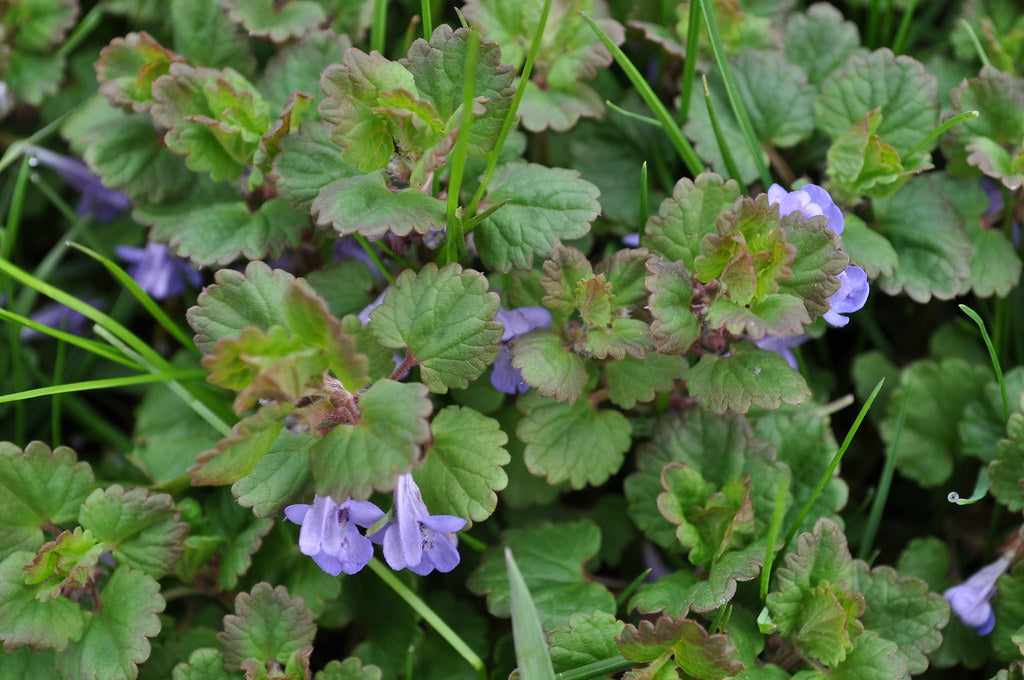
Creeping Charlie
Common Name
Creeping charlie, ground ivy
Scientific Name
Glechoma hederacea
Family
Lamiaceae
Lifecycle
Perennial
Seasons of Growth
Flowers in early Spring and Summer.
Key Distinguishing Feature
This shallow-rooted weed has a minty odor when crushes or cut. It has kidney-shaped or rounded leaves with scalloped edges growing low to the ground in a creeping cover formation. The stems can root at each note where the leaves attach. Flowers are tubular and appear blue/purple in colour. They are often found in 3 to 7 clusters.
Creeping Charlie is an aggressive weed that prefers moist, partly shaded areas, but it grows almost as well in the sun, spreading quickly into lawns and planting beds. Also called ground ivy, the plant is actually in the mint family, which is known for its tendency to spread. If you've spotted creeping Charlie early, you must remove and destroy every bit of the roots. Don't add this plant to the compost bin because it could take root there. It's better to bag it for yard waste pickup. If creeping Charlie has spread throughout a large area, it can be difficult to control through hand-weeding alone. If it's taking over a space where you don't want to grow anything else for at least six months.
The presence of creeping Charlie signals that the growing conditions for your lawn may need to be addressed. Too much shade, wet soils, or poor fertility could be issues. A healthy stand of turf makes it harder for creeping Charlie to invade your yard. Any open areas in your landscape, such as planting beds, can be areas where creeping Charlie pops up. Keep the areas well-mulched to reduce problems with it and other weeds.




